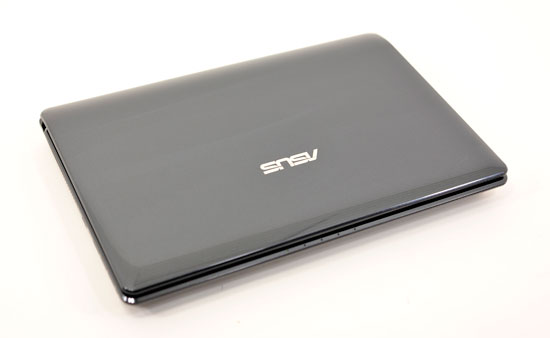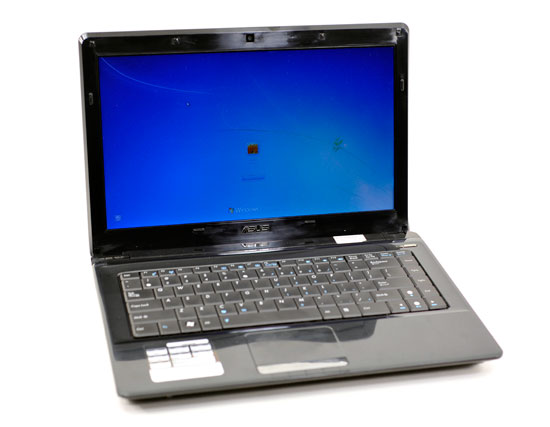Intel Arrandale: 32nm for Notebooks, Core i5 540M Reviewed
by Anand Lal Shimpi on January 4, 2010 12:00 AM EST- Posted in
- Laptops
The Platform
ASUS and Intel partnered up to send us an Arrandale system to test. It's a pre-production K42 notebook.

I won't comment on the build quality because honestly it's not very good. From what ASUS has told me it's already a lot better and we simply have very rough pre-production samples.

Shinebox.
As far as I'm concerned, it served its purpose as it gave me a great platform for measuring Arrandale performance.

I compared its performance to an HP Montevina system. Both systems used 4GB of DDR3-1066 and had CPUs running at 2.53GHz. The Core 2 Duo P8700 was our sample from the previous generation and we compared it to the Core i5-540M.










38 Comments
View All Comments
MonkeyPaw - Monday, January 4, 2010 - link
Personally, I'm disappointed with the "unchanged" battery life. The reality is, most IGP-based notebooks don't need to be faster to most people. A few friends of mine recently bought notebooks, and they have what I call average requirements: email, browser, iTunes, office, photo management. My advice to them was that anything they buy today will be more than fast enough for their needs (they were currently running outdated machines), and that their decision should be based on things like battery life and bonus features. Even my own notebook purchase was based less on total processing power and more on price, then battery life.I think Intel had it backwards. Start by improving battery life, then slowly improve performance. That may have been their plan, but it looks like 32nm has a ways to go for them before that can happen.
JarredWalton - Monday, January 4, 2010 - link
I would expect the LV versions to be competitive, but it wouldn't surprise me if the initial 32nm parts are not where they would like in terms of power use. The rev 2 of Arrandale will hopefully address that shortcoming.secretanchitman - Monday, January 4, 2010 - link
thats the thing though - who knows what apple is going to do now, since they currently use ion/9400m in the macbooks/macbook pros. they do use intel + discrete ati in the current imacs, yet the lowest end imac has a 9400 in it. the problem with arrandale is that it has the gpu integrated on, and traditionally...intel integrated graphics suck compared to nvidia and ati gpus.im hoping that intel made special versions of arrandale without the built in gpu, or they are able to turn it off, and use separate graphics instead. lets be honest, the 9400m is much better than anything intel offers now.
taltamir - Thursday, February 4, 2010 - link
what does it matter? apple can't run games anyways... neither can any laptop.The difference between intel and nvidia/ati is that a laptop with nvidia/ati can get playable FPS on the absolute LOWEST settings which look like crap. the intel can NOT get playable FPS, period.
Either would be a horrid experience for a gamer... get a desktop if you want to game.
filotti - Tuesday, January 5, 2010 - link
Actually, the article says that the performance of the integrated GPU is equal to the performance of the 790GX IGP. This means that it should be equivalent to the 9400m too.mino - Saturday, January 9, 2010 - link
Raw performance? Probably comparable to 785G in 3D benchmarketing.Drivers to be able to use the performance. Non existent.
This is pretty much a beefed up HD4500. Nothing less, nothing more.
marc1000 - Monday, January 4, 2010 - link
The desktop versions have a 16xPCIe slot, so I believe it IS possible to pair the mobile versions with discrete grapchis too. Not that manufacturers will be that much interested in doing so. After all, it seems that Intel aimed for the same level of performance that 9400 has, so Apple would not have reasons to go "non-Intel". I guess this is the primary reason why they made the GPU perform exactly at this level. It's the "good enough" philosophy.Penti - Tuesday, January 5, 2010 - link
Of course you can, HM/QM/QS57 supports switchable graphics too and has x16 or the same 16 (maybe) lanes on-die as the desktop parts for discrete graphics. It also has 8 lanes on the chipset. Apple, HP, Dell, Fujitsu etc will be interested in more high-end business models and consumer products.